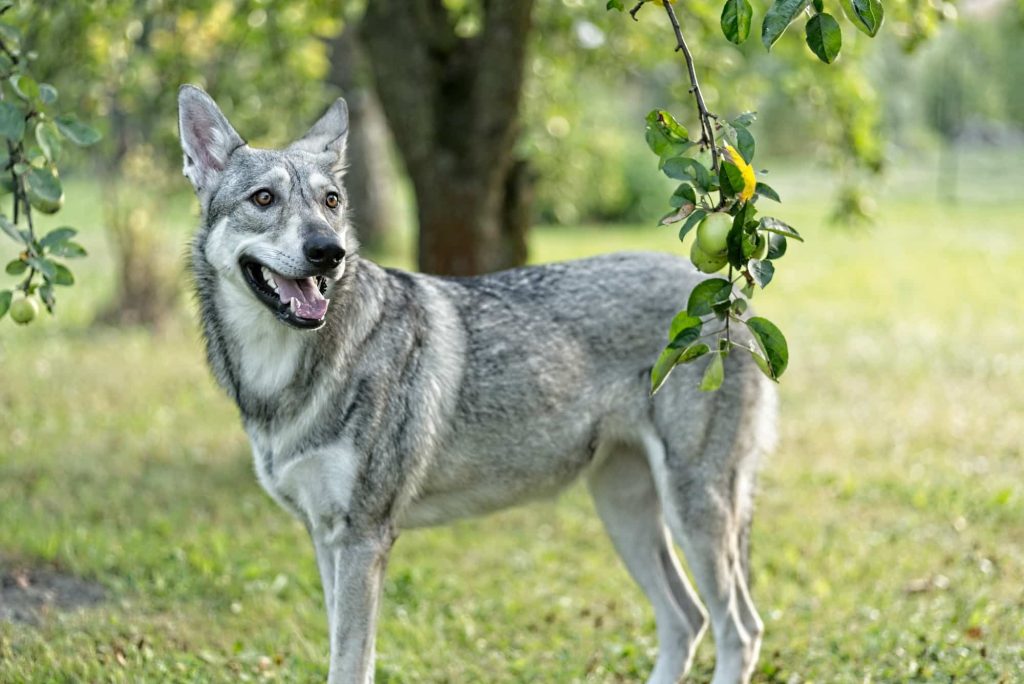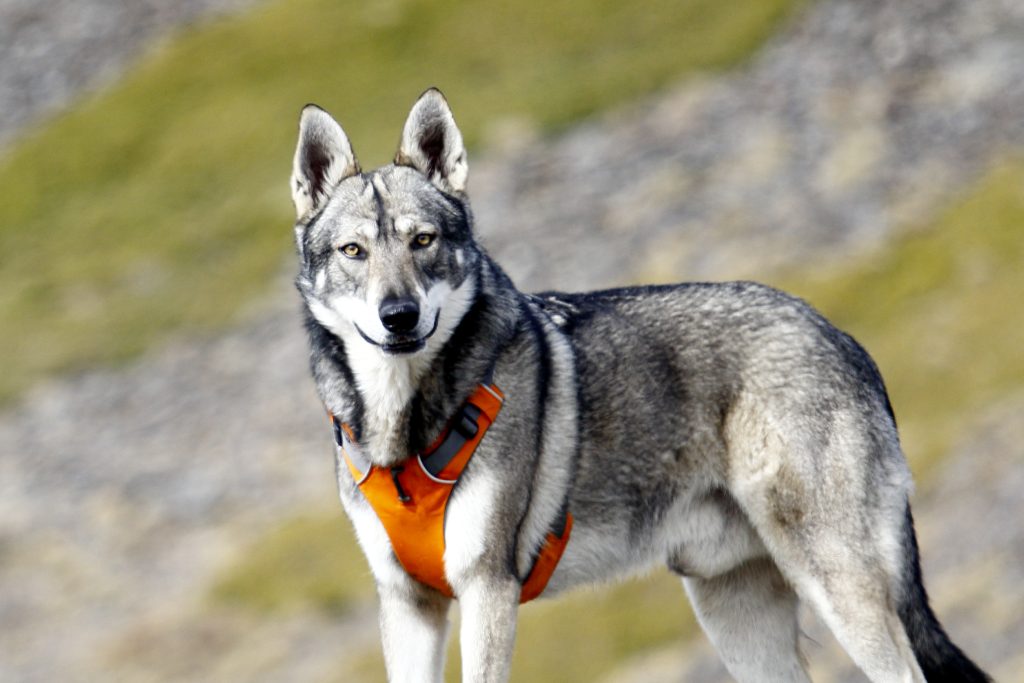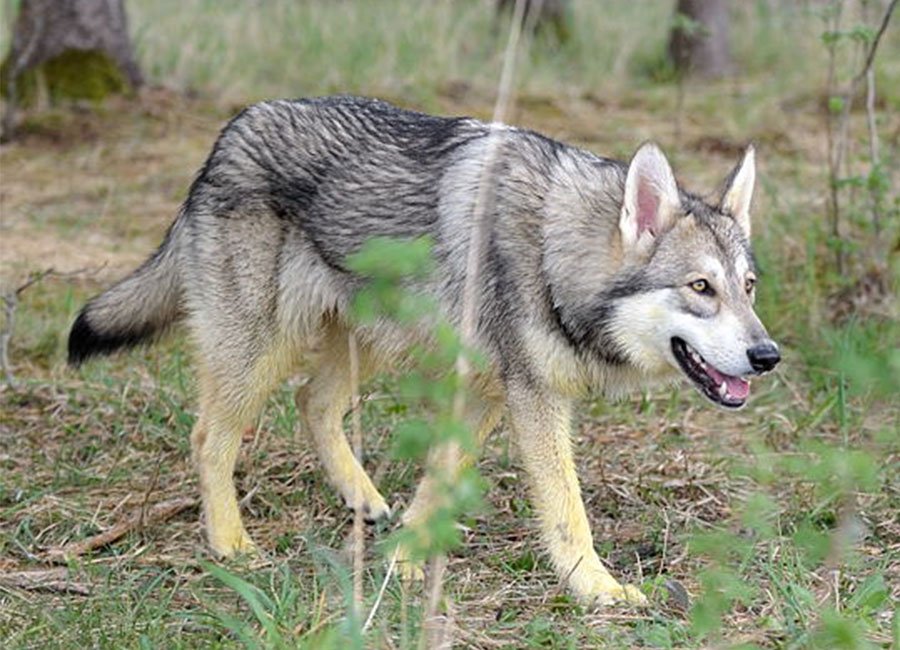Are you considering a Saarloos Wolfdog as your next furry companion? This breed is a unique and fascinating mix of domestic dog and European wolf, resulting in a stunning and intelligent animal. While they may not be the right fit for everyone, those who are willing to put in the time and effort to properly train and socialize them will be rewarded with a loyal and affectionate companion. In this article, we will explore the characteristics and needs of the Saarloos Wolfdog to help you determine if this breed is the right choice for you.
Breed Category: Working
Country of Origin: Netherlands
Average Size:65-75 cm (at the shoulder)
Average Weight:35-45 kg
Average Life Span: 10-12 years
Grooming Requirements: Moderate
Exercise Requirements:High
History and Origin
The Saarloos Wolfdog is a breed of dog that was developed in the Netherlands in the early 20th century. The breed was created by a Dutch breeder named Leendert Saarloos, who was interested in creating a dog that had the strength and intelligence of a wolf, but the loyalty and obedience of a domestic dog. Saarloos began his breeding program in the 1920s, using German Shepherds and European wolves to create the Saarloos Wolfdog.
The Saarloos Wolfdog was originally bred as a working dog, and was used for tasks such as herding, guarding, and pulling sleds. However, the breed’s wild nature and strong prey drive made it difficult to train and control, and it was not widely used for these purposes. Instead, the Saarloos Wolfdog became popular as a companion animal, and is now kept as a pet by many people around the world.
The Saarloos Wolfdog is a large, muscular dog with a thick coat of fur. The breed is known for its intelligence, loyalty, and strong protective instincts. However, the breed can also be stubborn and difficult to train, and requires a firm and consistent hand in order to be properly socialized and trained.
The Saarloos Wolfdog is a relatively rare breed, and is not recognized by many kennel clubs around the world. However, the breed has a dedicated following of enthusiasts who are working to promote and preserve the breed. In recent years, the Saarloos Wolfdog has gained popularity as a companion animal, and is now kept as a pet by many people around the world.
Despite its wild origins, the Saarloos Wolfdog is a loving and loyal companion that can make a great pet for the right owner. However, due to its strong prey drive and wild nature, the breed is not recommended for inexperienced dog owners or families with young children. If you are considering getting a Saarloos Wolfdog, it is important to do your research and make sure that you are prepared for the unique challenges that come with owning this breed.

Size and Breed Category
The Saarloos Wolfdog is a large breed of dog that was developed in the Netherlands in the early 20th century. They are a cross between a German Shepherd and a Eurasian Grey Wolf, resulting in a unique and striking appearance. These dogs are typically between 65-75 cm in height at the shoulder and can weigh up to 40 kg. They have a thick, dense coat that is usually grey or brown in colour, with a distinctive wolf-like appearance. The Saarloos Wolfdog is a powerful and athletic breed, with a strong and muscular build that makes them well-suited for a range of activities, including agility, obedience, and tracking.
In terms of breed category, the Saarloos Wolfdog is classified as a working dog. This is due to their intelligence, strength, and versatility, which make them well-suited for a range of tasks. They are often used as police or military dogs, as well as for search and rescue operations. However, they also make excellent family pets for those who are experienced with large, active breeds. The Saarloos Wolfdog is a loyal and protective breed, with a strong instinct to guard their family and territory. They require a lot of exercise and mental stimulation to keep them happy and healthy, and are best suited to homes with large yards or access to open spaces.
Fur Length and Colour
The fur of the Saarloos Wolfdog is typically medium to long in length, with a dense undercoat and longer, coarser guard hairs. The fur is designed to protect the dog from harsh weather conditions, and is particularly thick around the neck and shoulders. The fur on the tail is also longer and bushier than on the rest of the body, giving the dog a distinctive appearance.
The Saarloos Wolfdog can come in a range of colours, including shades of grey, brown, and black. The fur may also have a mixture of colours, with lighter or darker patches on the body. Some dogs may have a white or cream underbelly, while others may have a darker undercoat. The colour of the fur can vary depending on the individual dog, and may change slightly as the dog ages.
Termperament and Trainability
Saarloos Wolfdogs are known for their independent and strong-willed temperament. They are a breed that requires an experienced and confident owner who can establish themselves as the pack leader. These dogs are not recommended for first-time dog owners or those who are not willing to put in the time and effort to properly train and socialize them. Saarloos Wolfdogs can be reserved and aloof with strangers, but they are loyal and affectionate with their family. They have a high prey drive and may not be suitable for homes with small pets.
When it comes to trainability, Saarloos Wolfdogs can be challenging to train due to their independent nature. They require a firm and consistent approach to training, and positive reinforcement methods are recommended. Harsh training methods or punishment can lead to fear and aggression in these dogs. Early socialization is crucial to ensure that they are well-adjusted and comfortable in different environments. Saarloos Wolfdogs excel in activities such as agility, obedience, and tracking, but they may not be suitable for activities that require them to work closely with their handler, such as search and rescue.

Known Health Conditions
Saarloos Wolfdogs are a breed that is prone to certain health conditions. One of the most common health issues that affect this breed is hip dysplasia. This condition occurs when the hip joint does not develop properly, leading to pain and discomfort for the dog. Saarloos Wolfdogs with hip dysplasia may experience difficulty walking, running, and jumping. This condition can be managed with medication, physical therapy, and surgery in severe cases. It is important for Saarloos Wolfdog owners to monitor their dog’s mobility and seek veterinary care if they suspect their dog may be suffering from hip dysplasia.
Another health condition that Saarloos Wolfdogs are prone to is epilepsy. Epilepsy is a neurological disorder that causes seizures in dogs. Saarloos Wolfdogs with epilepsy may experience seizures that range from mild to severe. Seizures can be triggered by stress, excitement, or other factors. Treatment for epilepsy in Saarloos Wolfdogs typically involves medication to manage seizures. It is important for Saarloos Wolfdog owners to work closely with their veterinarian to develop a treatment plan that is tailored to their dog’s specific needs.

Openness to Strangers
Saarloos Wolfdogs are known for their cautious nature when it comes to strangers. They are a breed that tends to be reserved and aloof, especially towards people they do not know. This is due to their strong wolf-like instincts, which make them naturally wary of unfamiliar individuals. However, with proper socialization and training, Saarloos Wolfdogs can learn to be more accepting of strangers. It is important to note that this process can take time and patience, as these dogs are not naturally inclined to trust people they do not know.
Despite their initial wariness, Saarloos Wolfdogs can be very loyal and affectionate towards their owners. They are a breed that thrives on strong bonds and close relationships, and they are known to be very protective of their families. This loyalty can extend to other people that the dog has been properly introduced to, but it is important to remember that Saarloos Wolfdogs are not typically outgoing or friendly towards strangers. With the right training and socialization, however, these dogs can learn to be more open and accepting of new people and experiences.
Playfulness Level
The Saarloos Wolfdog is a highly energetic and playful breed that requires plenty of exercise and mental stimulation to keep them happy and healthy. They are known for their love of play and their ability to entertain themselves for hours on end. Whether it’s chasing after a ball, playing tug-of-war, or simply running around in circles, these dogs are always up for a good time. They are also highly intelligent and enjoy learning new tricks and commands, making them a great choice for owners who are looking for a dog that can keep up with their active lifestyle.
Despite their playful nature, the Saarloos Wolfdog can also be quite independent and stubborn at times. They are not always eager to please their owners and may require a bit of extra training and patience to get them to follow commands. However, with the right approach and plenty of positive reinforcement, these dogs can be trained to be obedient and well-behaved. Overall, the Saarloos Wolfdog is a fun-loving and lively breed that is sure to bring joy and excitement to any household.
Suitability as a Pet for Children
Saarloos Wolfdogs have a strong and independent nature, which can make them a challenging pet for children. They are highly intelligent and require a lot of mental and physical stimulation to prevent boredom and destructive behavior. They have a strong prey drive and may not be suitable for households with small pets. However, with proper socialization and training, they can make loyal and affectionate companions for experienced dog owners.
Exercise Needs
Saarloos Wolfdogs are highly active dogs that require a lot of exercise to maintain their physical and mental health. They are a breed that thrives on physical activity and enjoys being outdoors. As such, they require at least 2 hours of exercise per day, which should include a mix of both physical and mental stimulation. This can include activities such as running, hiking, swimming, and playing fetch. It is important to note that Saarloos Wolfdogs have a high prey drive, so they should always be kept on a leash or in a secure, fenced area when outside. Additionally, they should be provided with plenty of mental stimulation, such as puzzle toys or training exercises, to prevent boredom and destructive behavior.
Saarloos Wolfdogs are a breed that requires a lot of space to run and play. As such, they are not well-suited to apartment living and are best suited to homes with large, securely fenced yards. They are also a breed that enjoys being part of a pack and may become destructive or anxious if left alone for long periods of time. For this reason, they are best suited to homes where someone is home for most of the day or where they have access to a doggy daycare or dog walker. It is important to note that Saarloos Wolfdogs are a breed that requires a lot of training and socialization from a young age to ensure they are well-behaved and obedient. They are a highly intelligent breed that can become bored easily, so training should be varied and engaging to keep them interested.

Suitability for a Multi-Pet Family
Saarloos Wolfdogs have a reputation for being independent and reserved. They are known to be cautious around strangers and may take time to warm up to new people and animals. When it comes to other pets, their behavior can vary depending on their individual personality and socialization. Some Saarloos Wolfdogs may get along well with other pets, while others may be more territorial and aggressive. It is important to introduce them to other animals slowly and carefully, and to supervise their interactions to ensure everyone’s safety.
Housing Requirements
Saarloos Wolfdogs require a spacious living environment that allows them to move around freely. They need a minimum of 30 square meters of outdoor space, which should be securely fenced to prevent them from escaping. The fence should be at least 1.8 meters high and made of sturdy materials, as Saarloos Wolfdogs are known for their jumping ability. Additionally, they require a sheltered area where they can rest and seek refuge from the elements. The shelter should be well-insulated and large enough for the dog to stand up, lie down, and turn around comfortably. It should also be equipped with a raised bed or platform to keep the dog off the ground and dry.
Saarloos Wolfdogs are highly active and require plenty of exercise to maintain their physical and mental well-being. They need at least two hours of exercise per day, which should include both physical and mental stimulation. This can be achieved through activities such as long walks, runs, and hikes, as well as training sessions and interactive playtime. Saarloos Wolfdogs also benefit from having access to a large, secure outdoor area where they can run and play freely. However, they should never be left unsupervised in an unsecured area, as they have a strong prey drive and may chase after small animals.
Summary
The Saarloos Wolfdog is a unique and fascinating animal that requires a great deal of attention and care. Due to their wild ancestry, they are not suitable for inexperienced or casual pet owners. They require a lot of exercise and mental stimulation, and their strong prey drive means they may not be compatible with other household pets. Additionally, they can be quite independent and stubborn, making training a challenge. However, for those willing to put in the time and effort, the Saarloos Wolfdog can make a loyal and loving companion.
Saarloos Wolfdog Dog FAQS
Saarloos Wolfdogs can be difficult to train due to their independent nature and strong prey drive. They require an experienced and patient owner.
Saarloos Wolfdogs can make good guard dogs due to their protective nature, but they may also be wary of strangers and require socialization.
Saarloos Wolfdogs are not recommended for families with young children as they can be unpredictable and may not tolerate rough play.
The legality of owning a Saarloos Wolfdog as a pet varies by country and region. It is important to research local laws and regulations before getting one as a pet.
No, Saarloos Wolfdogs require a large, secure outdoor space to run and play. They are not suitable for apartment living.
Saarloos Wolfdogs may not get along with other pets, especially small animals like cats or rabbits, due to their strong prey drive.
Yes, Saarloos Wolfdogs require a lot of exercise and should have at least 2 hours of physical activity per day.
Yes, Saarloos Wolfdogs shed heavily twice a year and require regular grooming to maintain their coat.
Saarloos Wolfdogs can grow up to 76 cm (30 inches) tall and weigh up to 41 kg (90 pounds).
A Saarloos Wolfdog is a breed of dog that was created by crossing a German Shepherd with a Eurasian Grey Wolf.
